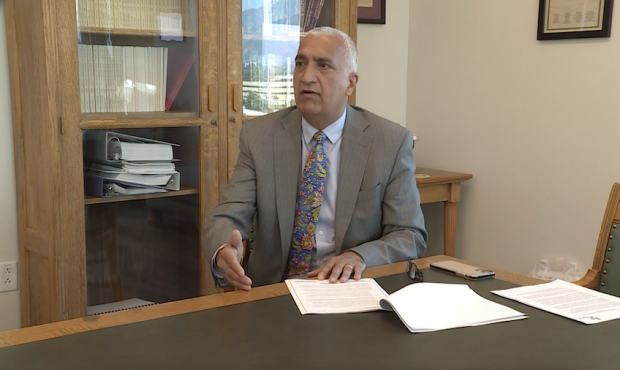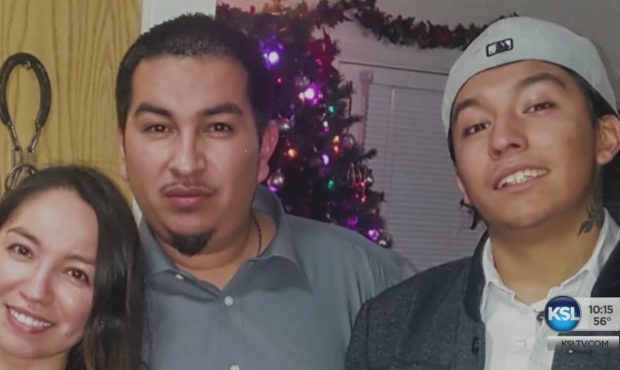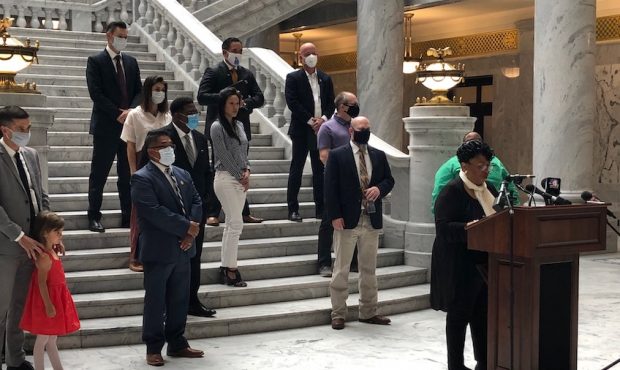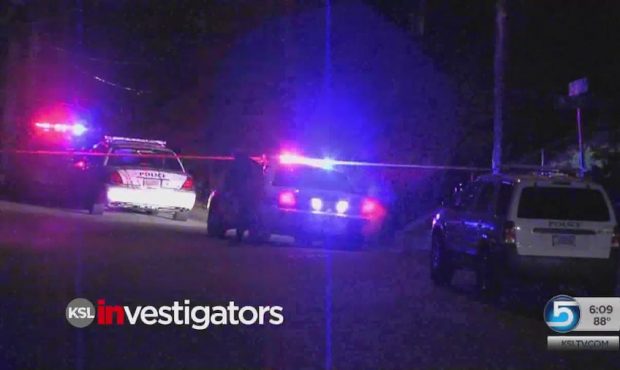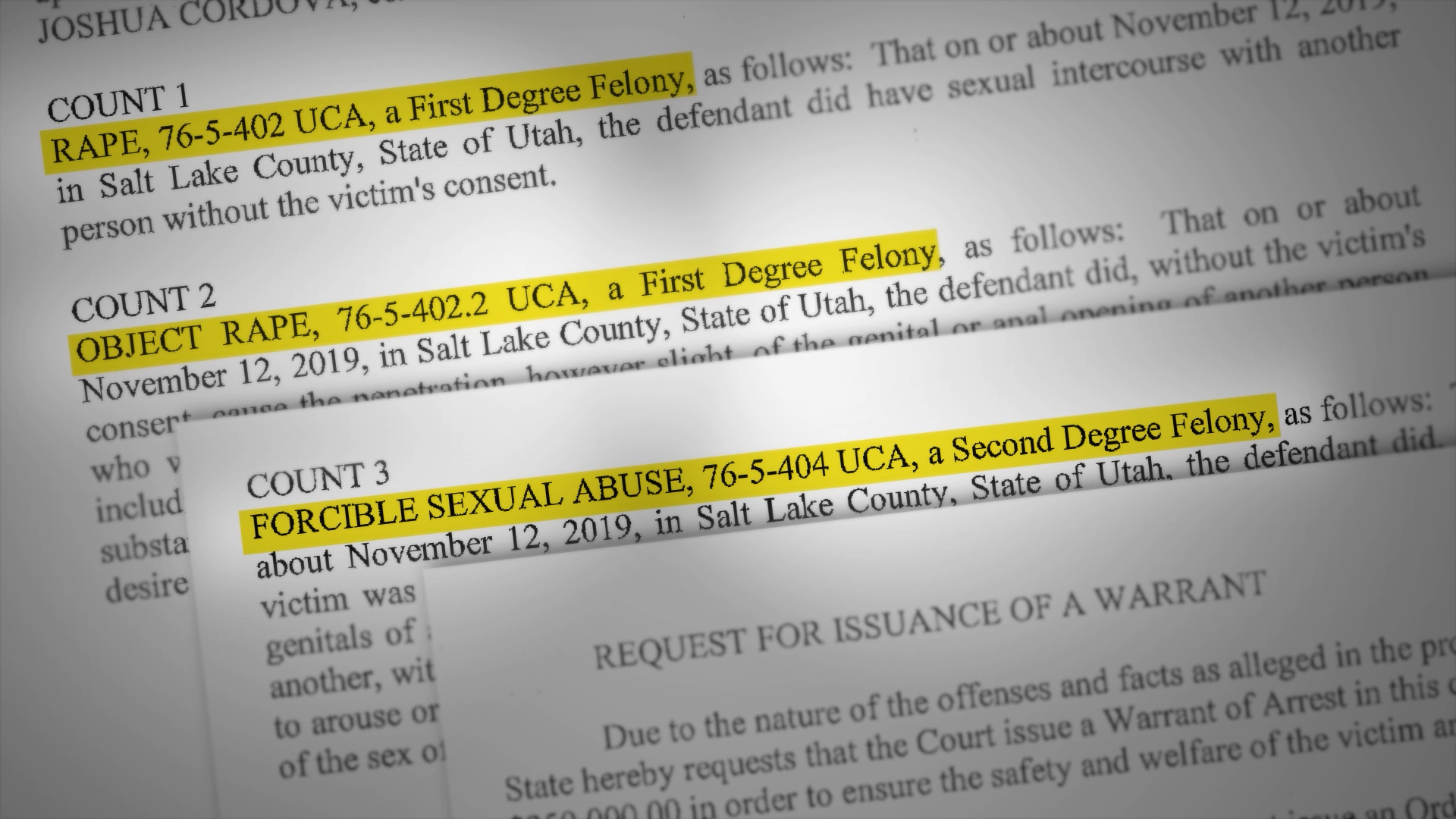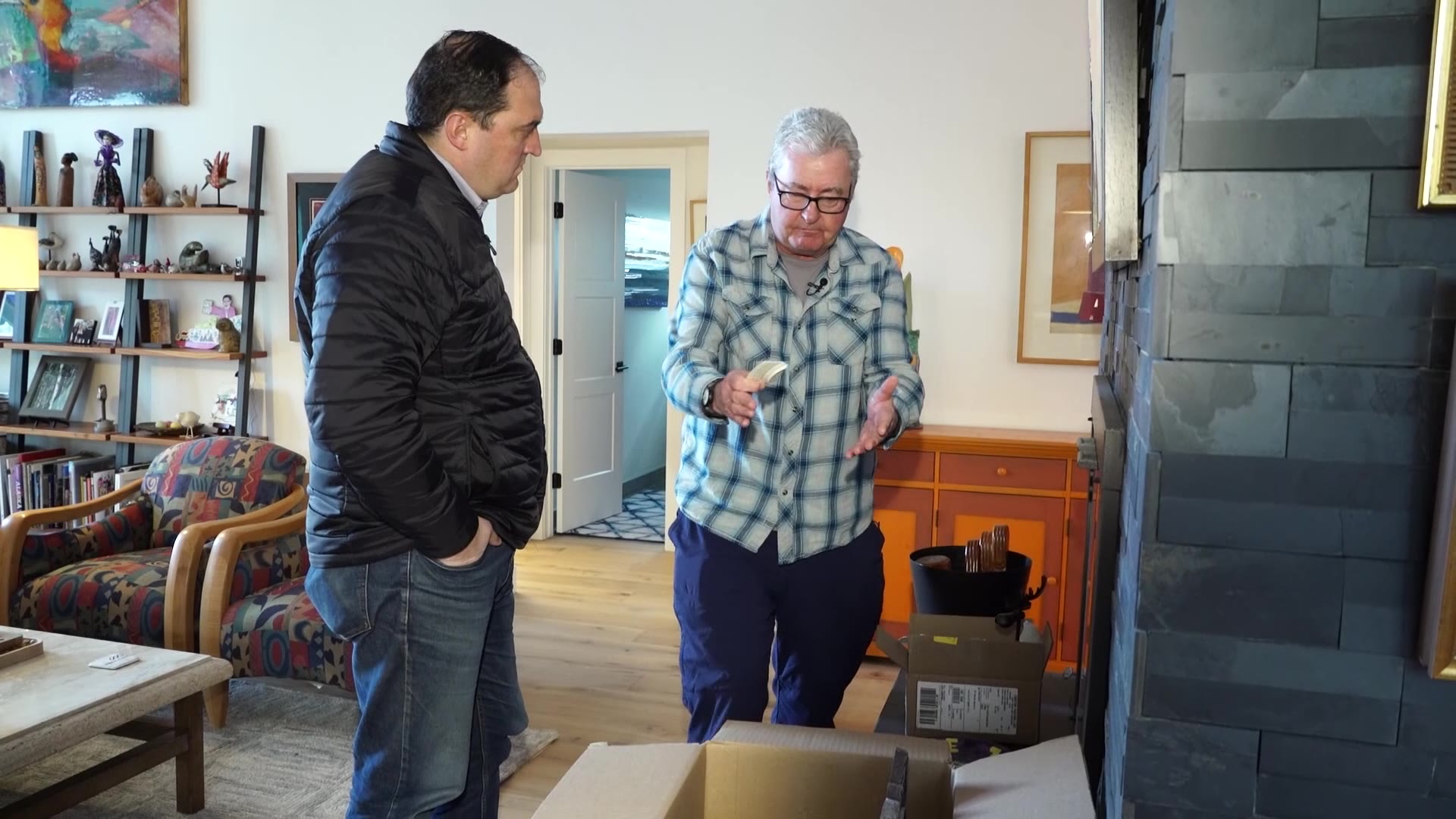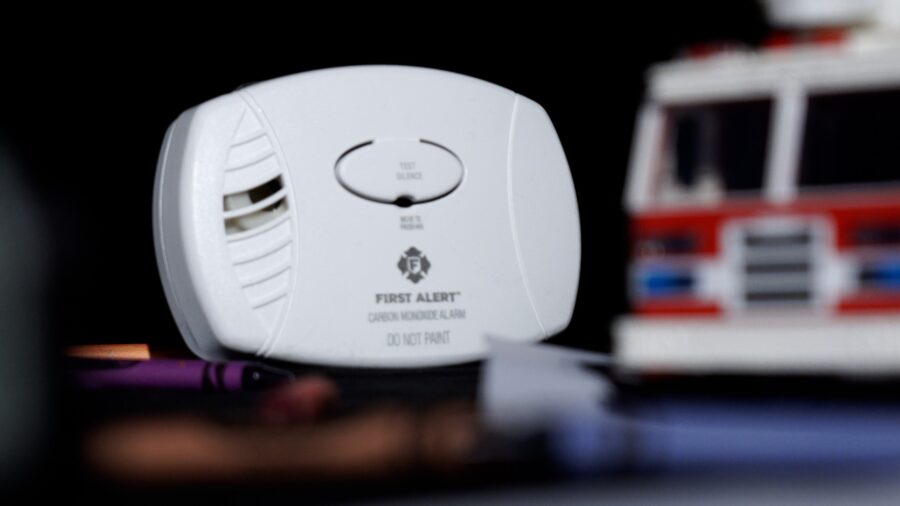Critical gaps in law enforcement training leave Utahns with mental illness at risk
Jul 20, 2020, 11:32 PM | Updated: Feb 7, 2023, 3:18 pm
SALT LAKE CITY — Utah law enforcement officers have access to specialized training to learn how to help people with mental illness who are experiencing a crisis. But the KSL Investigators found only 51 percent of officers in the state’s largest five counties have ever received the necessary training, leaving a vulnerable population at risk.
The need for specialized training became clear in a case that made headlines a decade ago.
Eleven Years Later, Lessons Learned?
Brian Cardall, a 32-year-old father, scientist and self-taught musician lost his life on the side of a Utah highway on June 9, 2009, while suffering a psychotic episode.

Brian Cardall
“He was just an extraordinary, extraordinary man. But with those many, many gifts and a mind that was going a mile a minute, he had some emotional issues,” said his father, former KSL reporter Duane Cardall.
Brian’s wife, Anna Cardall, had previously decided if she ever found herself in a position where she couldn’t help her husband on her own, she would call 911. She placed a frantic phone call at 1:04 p.m. that day from the side of the highway just outside Hurricane, Utah.
“He’s got a mental illness,” Anna Cardall told the dispatcher.
“Is he on meth, you said?” the dispatcher responded.
“No, mental illness,” she replied.
“OK,” he confirmed.
She was on the phone with the dispatchers for 13 minutes before officers arrived.
“He was dead 42 seconds after the police officer arrived on the scene. Forty-two seconds,” Duane Cardall said.
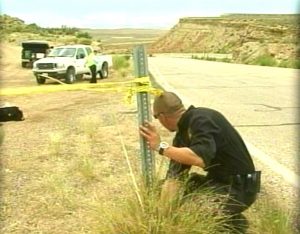
Brian Cardall, a 32-year-old father, scientist and self-taught musician lost his life on the side of a Utah highway on June 9, 2009, while suffering a psychotic episode.
The recording from the 911 call is still chilling to this day.
“Police officer! Get down on the ground! Down on the ground,” the officer yelled.
Brian Cardall can be heard moaning as officers tased him. An officer can then be heard saying, “4×15 Taser deployed.”
“I knew instantaneously that he had been killed,” said Duane Cardall.
The officer who responded to a desperate wife’s 911 call tased Brian Cardall twice in close succession, stopping his heart.
The young father with a bright future failed to receive the help he needed in a moment of crisis.
Those actions highlighted critical gaps in law enforcement training when responding to a mental health crisis.
The risk of being killed while approached or stopped by law enforcement is 16 times higher for people with untreated, serious mental illness.
Brian’s family lobbied for change, led by his father.
“Every police officer in today’s world needs to be able to deal with these issues and know how to approach these people,” said Duane Cardall.

Former KSL reporter Duane Cardall.
In 2011, the Utah Legislature passed a resolution encouraging police departments across the state to use crisis intervention training, but that resolution wasn’t funded, nor did it mandate the training.
Our KSL Investigation found the work started a decade ago has all but stalled, leaving those most vulnerable at risk. That training is particularly relevant in the wake of calls to defund law enforcement, or re-evaluate which programs take priority with limited funding.
How Many Utah Officers Are CIT Trained?
The KSL Investigators polled 55 agencies in Utah’s five largest counties to see how many of their officers have completed initial Crisis Intervention Team, or CIT, training. It is a 40-hour course outside the police academy that teaches officers how to respond to those experiencing a crisis and mental illness.
Utah law enforcement officers have multiple options for CIT training, including two independent programs: CIT Utah and CIT Metro.
To streamline the information, KSL counted the number of officers who have completed official CIT Utah or CIT Metro courses in Utah.
In Weber County, only 27 percent of law enforcement officers have received the training, 47 percent in Davis County, 50 percent in Salt Lake County, and 65 percent in both Utah County and Washington County.

Based on our sample statewide, 51.32 percent of officers in those departments have been through the training. Of those, 63.28 percent have remained current in their certification, meaning they have received an additional two hours of continuing education every two years.
However, not all 55 agencies could provide this number, including large agencies such as the Utah Highway Patrol and the Utah County Sheriff’s Office.
Of the agencies we surveyed, 30 told KSL they require CIT training for their department. Some only require it for their patrol officers and do not put a time restraint on when an officer should complete their training.
Why Did South Jordan Officer Refuse To Respond?
As another Utah family recently discovered, proper mental health training for all officers is still desperately needed.
On January 6, Susan Toensing woke up to pounding at her door. She rushed out of bed to find her panicked adult daughter, Charlotte and her 22-year-old grandson at the door. Her grandson was experiencing a mental health crisis.
He was violent, suicidal and refusing treatment.
“This is absolutely the worst I’ve seen him — the worst,” Charlotte later related. “His eyes were swollen, black. He had a laceration on his forehead from beating it on the dashboard of my car.”
In desperation, Toensing immediately called 911.

Susan Toensing
“I have my grandson here and he’s psychotic,” Toensing told the dispatcher. “He wants to kill himself.”
The dispatcher told Toensing a South Jordan officer would call her back directly and ended the call. The follow-up phone call wasn’t recorded, but Toensing said what the officer told her was shocking.
“The officer called me, and he said he wasn’t going to respond,” she said, claiming the officer told her it wasn’t a “police issue.”
“He said, ‘Because you can hurt yourself or kill yourself and that’s not a crime,’ and that they’re crime fighters,” Toensing recalled.
“I felt helpless. I was shocked, and I was kind of like, ‘Well, what do we do now?’” Toensing said. “We knew he needed emergency care.”
Charlotte said she felt betrayed.
“It’s the worst feeling in the world when you know your son needs help and they’re supposed to be there to protect and serve you and they won’t,” she explained. “You feel rejected from the community and you feel alone. It’s horrible.”
Toensing said what she described as the officer’s “adamant” refusal added stress to an already stressful situation.
“There’s blood all over my house. His face is extremely battered, self-inflicted and you’re not going to respond?” she said, in disbelief.
Two Hours Later
Two hours after the initial 911 call, the family did get help, but only because Toensing called MCOT, the “Mobile Crisis Outreach Team,” equipped with a licensed clinical social worker.
Unlike traditional emergency service vehicles with EMS branding, MCOT responds in an unmarked vehicle without flashing lights or sirens. It is a less threatening approach for people facing a mental health crisis. A certified peer support specialist, someone who can relate to the person in crisis based on their personal past experiences, also accompanies the clinician.
MCOT requested South Jordan police accompany them to the Toensing home, which is common when the unit is called on a potentially violent scene.
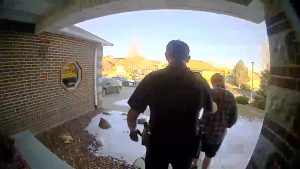
Body camera footage from the South Jordan Police Department after an officer arrived at the Toensing residence.
With the help of Susan’s husband, their grandson calmed down. The officers gave the victim a pink sheet, requiring him to comply, and were able to convince him to get inside their police vehicle to be escorted to the hospital.
However, Toensing’s call to 911 should have immediately initiated the help her grandson needed.
“So, this whole scene could have happened two hours sooner had they responded when they should have,” Toensing said. “To me that says they’re lacking in training. They should be able to handle those situations.”
So why didn’t South Jordan police respond after the initial call?
Representatives with the South Jordan Police Department admitted the situation could have been handled better by their agency.
“We got a young officer. There’s some miscommunication. That’s a misstep on our part,” said Lt. Matt Pennington, referring to the fact that the officer failed to respond and told Toensing to contact MCOT herself.
In addition, Pennington said there was some confusion at one point about the state of Toensing’s grandson, leading officers to believe the crisis situation had improved.
“Rather than going and escalating the situation, if he’s calm, we’re not going to respond right now. But if you need crisis outreach, call them,” Pennington explained. “We should have at least responded out there to make sure that was done, rather than waiting the couple hours it took to get MCOT out there.”
Pennington said once officers arrived at Toensing’s home, they did well.
“It was the response initially where we can learn from that,” he added.
The officer who initially refused to come had been on the job less than three years and didn’t yet have the necessary crisis response training.
“He’s not been through the CIT program,” Pennington confirmed.
And our extensive KSL Investigation found he’s not alone.
Crisis Intervention Team Training
Dr. Todd Soutor is the Executive Director of CIT Utah. He said it is important for officers to develop the tactics and skills to approach delicate mental health situations.
“When these police officers respond, they can do it in a way that may escalate things, or may de-escalate things,” Soutor said.
Soutor, who also works as a psychologist, said CIT training is designed to help officers respond the best way possible.
“I hope they gain a sense of confidence and understanding when they approach these difficult and delicate situations,” he explained.
Detective Joe Taylor with the Salt Lake City Police Department agreed.
“I think when you have more information, and you can make better decisions, [and] you have better outcomes,” Taylor said.
As a coordinator with the police department, Taylor coordinates trainings for Salt Lake City police officers, including CIT. He also responds to mental health crisis calls within city limits.
One of the most difficult parts of being an officer, Taylor said, is being able to make split-second decisions in high-stress situations.
“Maybe we can give you some more tools in your toolbox to deal with the situations when they arise,” he said.
CIT training goes beyond lectures. Officers also get the chance to visit the state hospital to talk with people who suffer from mental illness.
Taylor said this provides officers with better understanding when they respond to future calls.
“They can build some empathy so when they go on those calls… they can say, ‘Okay, I understand what’s going on here,’” he said.
CIT training programs in Utah are based on the Memphis Model, which originated in 1988.
While 27 percent of officers with the South Jordan Police Department have received the training, not all have maintained the suggested two-years of continuing education.
“What we haven’t been able to do in recent years is keep that certification up,” Pennington said.
Only one of South Jordan’s officers has kept that CIT certification valid.
The 40-hour CIT training course is not mandatory at the South Jordan Police Department or at 54 percent of the departments we surveyed in Utah, but a number of agencies are making the effort to get officers trained, whenever possible.
Remember the department that responded to the Cardall’s emergency call in 2009? Of the 29 full-time officers currently working at the Hurricane Police Department, 100 percent are CIT trained today.
Roadblocks
Agencies the KSL Investigators spoke with say CIT training can’t always be their top priority.
“With manpower and call volume and resources, it’s hard to send officers away to outside training,” Pennington explained.
Many agencies expressed similar concerns in their responses, saying it is difficult to take an officer off the ground for a week in order to be trained. It leaves the department short-staffed or forces them to pay another officer overtime.
Chief Tom Ross with the Bountiful Police Department, who also serves as president of the Utah Chiefs Association, said some departments have to wait a year to get their officers registered in a CIT course that can accommodate them.
“We get officers in when we have slots available and if we don’t have turnover that’s easier, but if you have turnover, then you’re training new people all the time,” Ross said. “So, I can’t sit in front of you and say every officer that’s going to respond [to emergency calls for service], has CIT training.”
“I mean, we don’t have the luxury of saying, ‘Don’t go on this call until we get you trained,’” he continued.
Still, Ross believed CIT training is important and enhances an officer’s personal awareness and abilities.
“I think it plays a big role,” he said.
“These men and women are really wanting to do the right thing. They really do care,” Ross added.
While Taylor said CIT training is mandatory at the Salt Lake City Police Department, he said manpower and resources has understandably made implementing that requirement difficult.
Many agencies expressed that while CIT training may not be required for their agency, they strongly encourage it and support it. Others who don’t mandate the training said the training is instead a requirement for advancement or promotions. Most all said with the right funding and resources, they would like to make it more widely available to their entire department.
Some agencies have turned to other de-escalation programs such as Mental Health First Aid and Verbal Judo, or have created their own in-house trainings with a private licensed clinical social worker or their local mobile crisis units. For example, Ogden, Herriman and Cottonwood Heights police departments utilize outside training programs they feel equip their officers with similar tools.
A few agencies have annual in-house trainings to ensure that those who are CIT-trained stay current on their certification, such as the Washington County Sheriff’s Office, St. George Police Department, Roy Police Department and Unified Police Department.
Utah POST Academy does require every police officer in our state has 16 hours of mental health training as part of their required curriculum before they graduate. That’s something the academy pays for, not the state. So officers who don’t get formal CIT training are relying on just two workdays of instruction to handle crises like the Cardall’s and Toensing’s.
The Solution? Turning To Legislation.
One possible solution is finally making Crisis Intervention Team training mandatory. One Utah lawmaker is on board.
Rep. Steve Eliason, R-Sandy, plans to introduce legislation in the next session requiring CIT training for all law enforcement officers in Utah. Doing so would place the funding burden on the state.

Rep. Steve Eliason, R-Sandy.
“It’s only 40 hours. I think it’s absolutely critical,” Eliason said. “We do expect them to have, let’s just say the ‘mental health first aid skills’ that they can help de-escalate that situation.”
Eliason said most mental health calls are sporadic, making it necessary for every officer to be prepared to address that issue when that call arises.
“It’s critical that they’re trained because they’re often the only option,” he said, realizing law enforcement is often called to emergency situations where mental illness is a factor.
Eliason believes making resources like Mobile Crisis Outreach Teams and receiving centers available to officers helps them do their job more effectively. He said this keeps an individual’s involvement with law enforcement shorter in duration and more clinically focused.
“They [police officers] oftentimes don’t have sufficient training to help in that situation and simply putting them to jail, often just exacerbates that person’s situation,” Eliason said. “They’re not well addressed by incarcerating that individual or just putting them in handcuffs.”
Eliason added that recent demonstrations of civil unrest illustrate the timeliness of this issue.
“There’s never been … a better time to address the underlying mental health issues and try to strike at the roots of some of these issues instead of just going back to the broken model,” he said.
CIT Utah Vs. CIT Metro
Another hurdle our investigation uncovered: There are two CIT programs and two differing philosophies currently in operation in Utah. CIT Metro recommends officers be trained at the beginning of their career, while CIT Utah prefers officers wait to receive the training until they’ve had some time on the job and can better absorb and apply the information.
CIT Utah Executive Director Todd Soutor said he believes the decision should be left to each individual department.
“Those agencies have a lot of factors to consider in terms of who they send, when they send them, in terms of their career, and each department has to deal with their unique reports. We respect that and just try to work in partnership with all of those agencies,” Soutor explained. “Some departments will send all of their officers, others will send a select group of officers. The different departments have various entities to whom they are accountable, whether it’s city council or a mayor, county commissioners, [the] city attorney.”
Of the 55 Utah law enforcement agencies the KSL Investigators polled, a majority currently go through the CIT Utah program for officer training. However, a number of agencies use both programs, noting that they send officers to whatever academy has an opening.
Salt Lake City, Orem and West Valley City Police Departments currently utilize the CIT Metro program exclusively.
Taylor said the Salt Lake City Police Department has included the CIT Metro training in its officers’ police academy for the past 15 years or so. He said the department has worked since then to get all officers the 40-hour CIT training, regardless of their tenure with the department.
However, the department is not yet 100 percent CIT-trained because of various factors, such as catching up on training for veteran officers who were hired before CIT trainings began and new hires who come from other agencies where they didn’t receive the training.
Still, Taylor said most Salt Lake City patrol officers have been CIT-trained.
“If you’re going to call into our dispatch and ask for a CIT officer, chances are good you’re going to get an officer who’s received CIT training,” he said.
As is the philosophy at CIT Metro, Taylor said it’s good to have officers receive CIT training early in their career.
“They can go right on the street and pull from that training,” he said. “You want officers to have as much information as they can.”
Taylor said he understands why not all officers are required to be trained immediately since the Memphis Model began as a course for select officers who expressed interest in responding to mental health-related calls.
“Because the original model of CIT was that only a portion of your department is trained and you would apply for that position and you’d go through specific training and then you as a CIT-trained officer took care of those calls,” he explained.
Both CIT Utah and CIT Metro programs focus on teaching officers the tactics and communication skills to de-escalate situations on mental health or substance use disorder calls by providing in-depth instruction about these conditions. Both programs said they’re also focused on establishing and maintaining working relationships between mental health/advocacy groups, and law enforcement.
Both programs also described similar training components:
“We teach them about mental health illnesses, treatment, all those different things, and we let them meet with people who have mental health issues. We will bring in peer specialists from the UNI Crisis Team to come in and sit down with officers and tell their experience,” Taylor described.
Still, Eliason believed it is critical that officers are CIT trained early-on.
“Why not give them all the tools that they are going to need before they’re on the street experiencing a difficult situation?” he said.
The overall goal? Better outcomes in crisis, in some cases, saving lives.
National Perspective: A Closer Look At De-Escalation Requirements
Nationwide, the University of Memphis’ CIT Center reports that there are 2,700 CIT programs spanning all but four states — Alabama, Arkansas, Rhode Island and West Virginia. According to The Journal of the American Academy of Psychiatry and the Law, those 2,700 programs only account for 15 to 17 percent of police agencies, though they note that figure probably underestimates the total number of CIT-trained officers due to different adoption and implementation standards.
Though CIT training is not mandated by law in Utah, the University of Memphis shows that CIT is in use in 21 of Utah’s 29 counties, amounting to 72 percent.
Here, the Beehive State fares much better than its neighbors. In Nevada, only two of their 16 counties have a CIT presence, Arizona showed CIT in just four of its 15 counties and Wyoming’s 23 counties only show four utilizing CIT. Only Idaho and Colorado have more than 20 percent of their counties utilizing the training, with 13 of 44 counties in Idaho and 15 of 64 counties in Colorado.
Have We Done Enough?
Susan Toensing can’t imagine having lost her grandson that fateful January morning.
“I can’t even begin to think about that,” she said, in tears. “There would be no reason. It would just be because some officer chose not to respond.”
“Have we done enough? No,” Duane Cardall reaffirmed. “There’s no question in my mind more needs to be done. But progress comes in increments, unfortunately.”
In the Cardall’s case, Brian’s life ended far too soon because of the way law enforcement responded. With the proper training, Cardall believes other families may be spared his family’s pain.
“We miss Brian immensely,” he said. “You’re always thinking, ‘Here we are ten, 11 years on – what would he be doing now?”
Have you experienced something you think just isn’t right? The KSL Investigators want to help. Visit KSLInvestigates.com to submit your tip, so we can get working for you. You Ask. KSL Investigates.
Resources
If you or someone you know is struggling with thoughts of suicide, call the suicide prevention hotline at 1-800-273-TALK.
Crisis Hotlines
- National Suicide Prevention Lifeline: 1-800-273-TALK (8255)
- Statewide/Salt Lake County Crisis Line: 801-587-3000
- Utah County Crisis Line: 801-691-5433
- Wasatch Mental Health Crisis Line: 801-373-7393
- Trevor Project Hotline for LGBTQ teens: 1-866-488-7386
Online Resources
- NAMI Utah: namiut.org
- Utah Chapter-American Foundation for Suicide Prevention: afsputah.org/chapter/utah
- Suicide Prevention Lifeline: www.suicidepreventionlifeline.org


